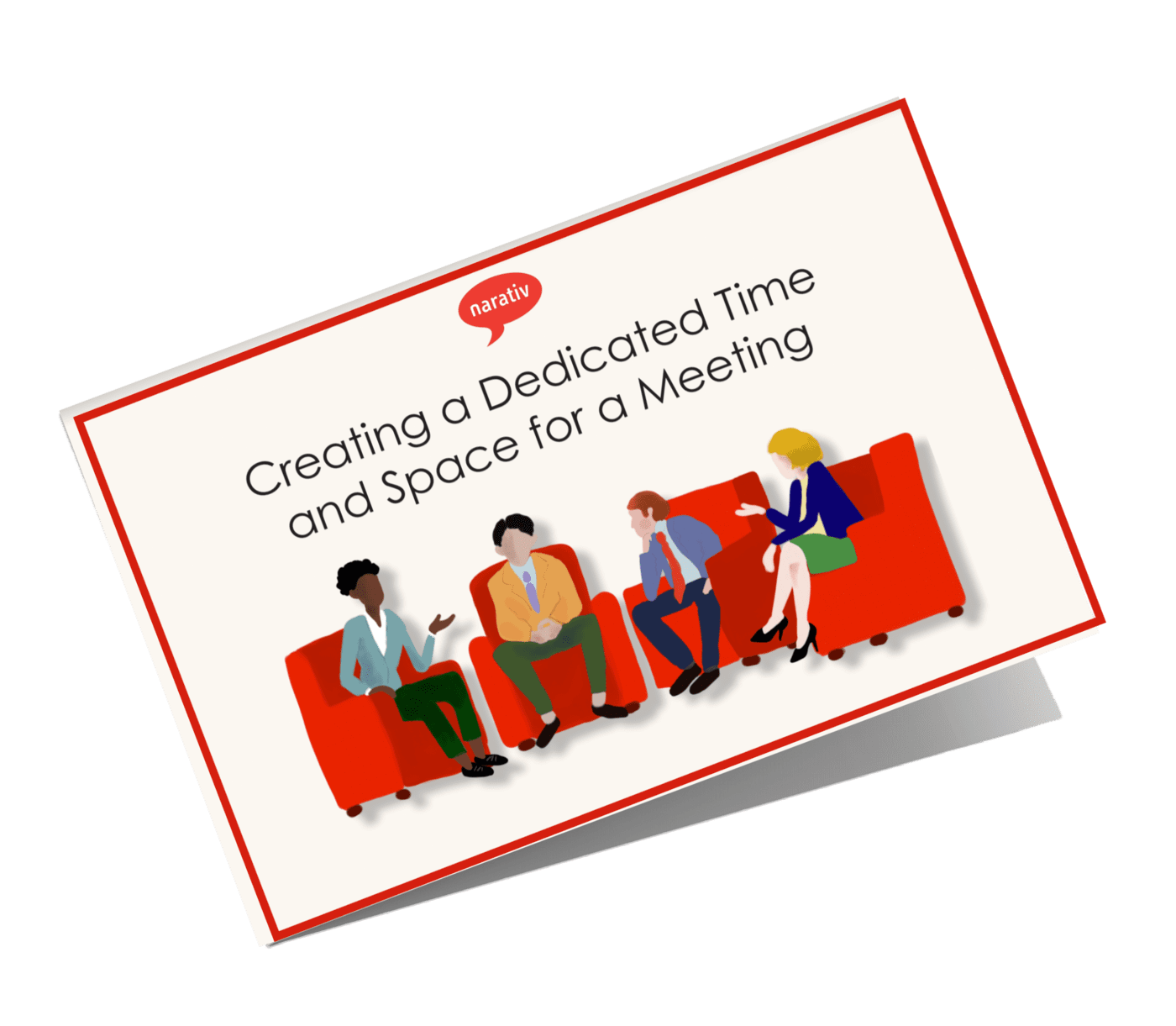Whether your business has been around for decades or it’s brand new, you need a value proposition—it’s the foundation for everything you do. Your value proposition is what communicates the benefits customers can expect from your company, and it tells people why they would choose your product or service over the competition. Ultimately, it’s a powerful and clear summary.

While it’s highly probable that your business or organization already has a value proposition, let us ask you this: does it exemplify who you are as a company and help you to acquire new customers? Is it sticky enough for people to remember and powerful enough for them to care?
If you are not quite sure, that’s ok. At Narativ, we have a simple process to help you get clear about (and potentially even revise) your value proposition and then transform it into a story that sticks! It all begins with listening…
1. Listen to your competition
Take stock of similar companies—your main competition. What are they doing really well? What are they lacking? How does this compare to your company? Where is there opportunity for you to stand out? Maybe you have better-trained employees or deeper access to industry experts. Or maybe your company is a little more niche than your competitors, focusing on one aspect of your field.
Let’s say you’re a pharmaceutical company. As you take stock of your competitors, you notice they research and develop all kinds of drugs and medications. However, your sole focus is research/development for antidepressants. With such a narrow focus, it’s clear that you stand out from your competitors because you do one thing really well. Take note of that… We’ll come back to this.
2. Listen to your customers
The next step is listening to your customers, whether they’re other businesses or individual customers. What do they love about your product or service? What personal stories can they share around their experiences with the effectiveness of your product or the care shown by your customer support? Gathering their experiences will help you see what you do well (according to actual buyers, which is gold).
So let’s circle back to your pharmaceutical company. You conduct a survey or contact many of the doctors (customers) who buy and prescribe your antidepressants. After asking them what they like, you find physicians love that their patients report very few side effects and they get few to no complaints about your drugs. That’s definitely something you want to hang on to!
3. Listen to your employees
Finally, listen to your employees. What did they first notice when joining the company? What values do they experience regularly and observe internally about the company? Give your employees a chance to share their stories about interactions with co-workers, leaders, or customers that exemplify your company’s values. This will provide you with insight into the company culture and the great minds behind the products/services you sell.
What does this look like for your pharmaceutical company? You ask the medical experts, researchers, and your sales team about their experiences within the company. What’s their story? From these questions, you discovered that when many employees first joined the company they noticed the emphasis on creating medications that will work for as many people as possible (a wide age range, varying medical histories, etc.). Your employees noticed that your company is as inclusive as possible with your products.
4. Connect the dots
Now that you have information from several sources, it’s time to connect the dots to create a powerful and accurate value proposition. See where all the feedback overlaps between your competition, customers, and employees, and then notice where it differs to discover what varying perspectives have to offer.
As we connect the dots for your pharmaceutical company, we can see you stand out by specializing in antidepressant medication that works for as many people as possible, with minimal side effects. So, your value proposition may look something like this: We specialize in researching and creating antidepressants with the fewest side effects possible for people around the world.
A Story That Sticks
Alright, so you’ve got your value proposition. Hooray! Now what? Well, now it’s time to turn it into a story that sticks. Your value proposition is your road map for creating a powerful company story, a memorable story that connects emotionally.
The answer is sense-based storytelling. Sense-based storytelling is—you guessed it—based on your five senses, relating events as they were seen, heard, smelled, tasted, and touched. This type of story only answers the question of what happened and nothing else; it eliminates the judgements, opinions, interpretations, feelings, or comments from the story.
Why do this? Our brain loves the five senses (like, loves them). When we hear a sense-based story, the way our brain is hard-wired causes us to see, hear, smell, taste, and feel like we’re in the story. We imagine everything as if we were there, making it much more memorable.
Create Your Story
Transport your audience; take them with you. That’s the power of storytelling, and the power that you, as a storyteller, hold. You can give your listeners a real experience by placing them inside the story. It’s something they won’t soon forget.
To create your company story based on your value proposition, think of experiences and situations that echo your value proposition. What stories do you have that demonstrate the value you offer? This may be from the very beginning of the company, stories of how it was founded. Or it may be a story from a customer interaction. It may even be a story of how you came up with the value proposition, listening to competition, customers, and employees.
If you’re feeling a little lost, don’t worry! This is what we do. Here at Narativ, we help you leverage the power of storytelling to build and strengthen your business. We’re here to give you guidance with our business storytelling training programs, one-on-one coaching, and virtual workshops. Contact us so we can work together to transform your value proposition into a story that sticks.



